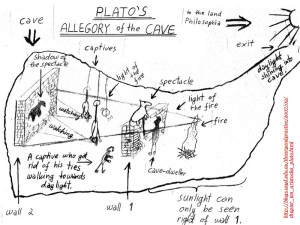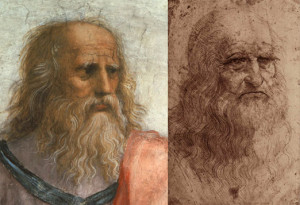The Distance between the Idea & Image/
ފެންނަ ފެނުމާއި ، ވިސްނޭ ވިސްނުމާއި ދޭތެރޭ ހުރި ގުޅުމާއި ބެހޭގޮތުން ފިކުރުކުރުން
(Considering the relationship between what you see (image) and your thoughts (idea)
“Philosophy” when translated in Dhivehi by students (1st year Architects).
For the communication module, I had to introduce the basic idea of perspective to the first year architecture students. As part of the design module they were already researching Plato’s Essentialism Philosophy, hence i wanted continue from the line of thought, to make them familiar with the basic concept of perspective. I didn’t want to start off with “perspective”, as an arbitrary idea, but to enable the students to get a sense of how, through-out history, people have investigated the idea between what is perceived and conceived /the ideal and the reality. Although these concepts are quiet hard to grasp, especially within the constraint of one class, and also because it doesn’t fall within the scope of my module to be going into such depth, I felt getting in to the core of how these ideas were conceived through history, would help students during there studies (At-least it did for me). I always had a need to see ideas originated/ and how its comprehension changes through history, up to present.
My narrative for the presentation was to get them through the ideas of Plato, “the Allegory of the Cave”, to introduce the difference and relationship between the ideas and the images, then to follow on from there to the idea behind geometry through to the idea of Plato’s Essentialism (During the design class they were already researching Platos 5 essential solids).
Plato argued “Things that are accessible to the senses are only the shadows of their ideas. The ideas exist really; the existence of things accessible to the senses are derivatives in relation to the existence of ideas.” –The Philosophical Myth of Creation, by M. Heller.
Finally the presentation finished with the idea of “Perspective”, and how it came to be conceived, during renaissance, especially looking at paintings and investigations made by Leonardo da vinci.
“Leonardo considered a painting a window to the outside world, and wanted everything in his paintings to look as if it were a scene through a window, happening before the viewer’s eyes” – Perspective & Leonardo’s “perspectogrpah””-
Rapheals “School of Athen” painting gave new depth & summed up the whole presentation within a coherent narrative, whereby the “painting” which itself was an investigation of one point perspective, & celebration of Western Philosophical thoughts, depicted Plato at the center of the painting, in the image of Leonardo da vinci.


